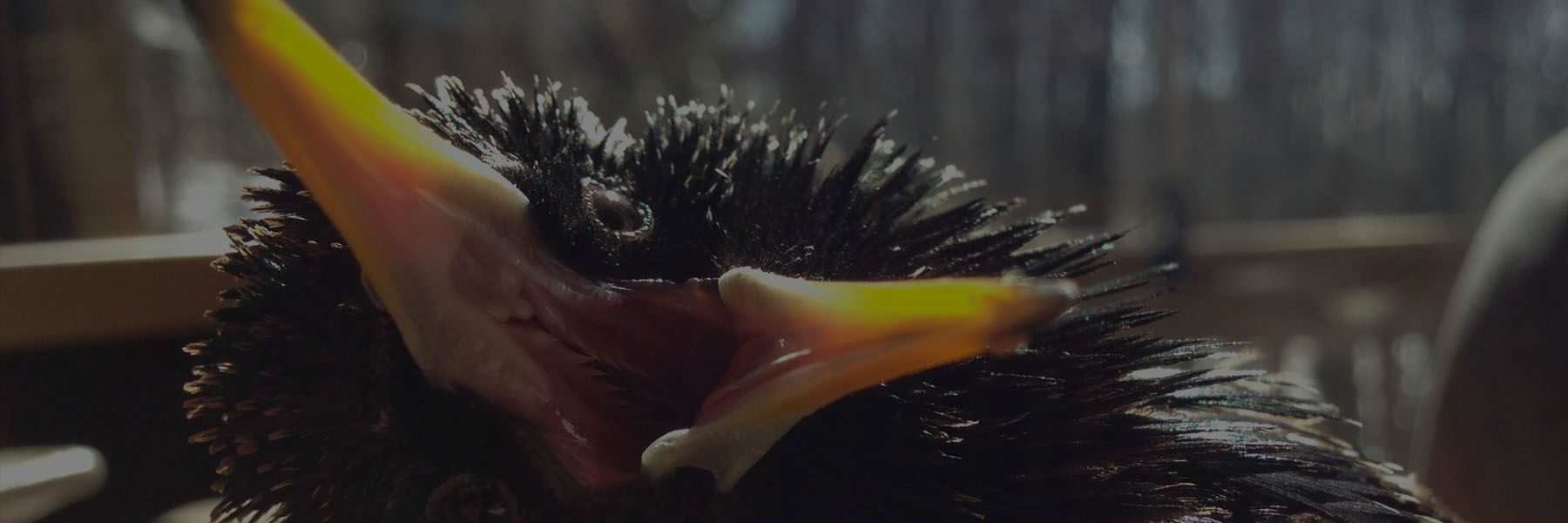Life with a Starling
2 CommentsThe European Starling is one of the United State’s most hated birds. They were brought here in the late nineteenth century and have grown to be one of our most abundant songbirds. They are an invasive species and compete with our native birds for prime nesting spots. They are one of the few resident birds that can be taken in as a pet.
Meet Piasa.

Piasa in Winter plumage
My friend raised him from when he was just days old. You have to be very attentive when raising a baby bird because they eat… often. The good thing is that they also sleep through the night so it is not a 24-hour job. Two years later, she needed someone to take over his care because she will soon be moving across the country. This would be a very stressful ride for a small bird. Even though the thought of having five cats and one bird in the house worried me, I happily volunteered. Besides, he grew up with two cats, a very large dog and Birds-of-Prey living under the same roof.

Don’t worry, they only look with curiosity and are more interested in the birds outside.
After spending some time with this bird, I have come to respect Starlings a lot more than I used to. They are actually quite beautiful, very interesting and pretty smart! It’s no wonder they are doing so well in their non-native land.

Piasa after a bath.
They mimic extremely well. Piasa learned many words and sounds from his original house and is picking up some things from me too. I’ve successfully taught him a few other bird sounds, such as the Wood Thrush, Ruby-crowned Kinglet, Prairie Warbler, Hooded Warbler and more.
Note that the bare parts on his chest are just from a bad molt, I am working on fixing this.
Piasa’s cage is in my loft, next to my desk. I keep his door opened while I work so that he can fly freely. He really is not a great flier, but he loves perching either right outside his cage or on my hands and shoulders. I honestly would have never thought a wild songbird would be so personable.

This did not hurt as much as it looks like it did…
He is also very curious and will poke around, like Starlings do. Unfortunately, he will sometimes try to look around my eyelids or pick at a birth mark. He will also jump to my desk and poke around at my mouse and keyboard.
When the sun is out, he enjoys sunbathing.

Piasa loves to sunbath on my hand
His preferred place to do this is on my hand, however, the other day, I caught him on my desk alone.

Piasa sunning on my desk
I’ve learned to live with the fact that bird poop will show up pretty much all over my desk area, on my chair, on my keyboard, on me… but I am OK with that. At least I know that he is healthy and, to be honest, songbird poop is not that gross or smelly. Besides, he eats a mixture of cat food and poultry layer mash, along with various fruits and veggies.
Despite the poop, he is a great feather-kid to have. I’ve learned a lot from him and he certainly knows how to show his appreciation. I can see him growing closer to me every day – I never thought I would have such a bond with a wild Starling!

Piasa enjoying the sun.








